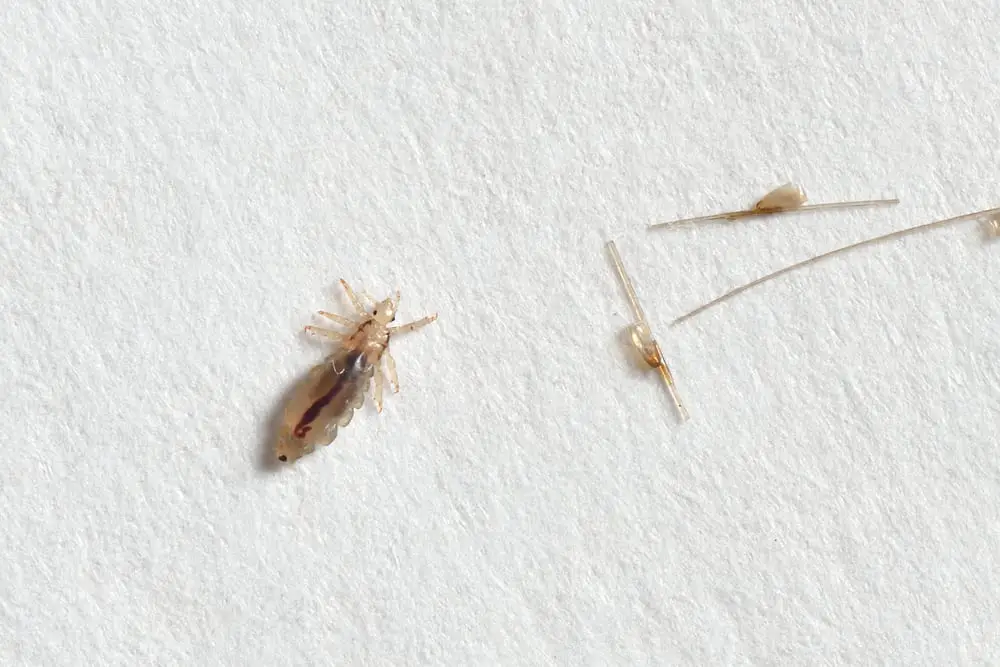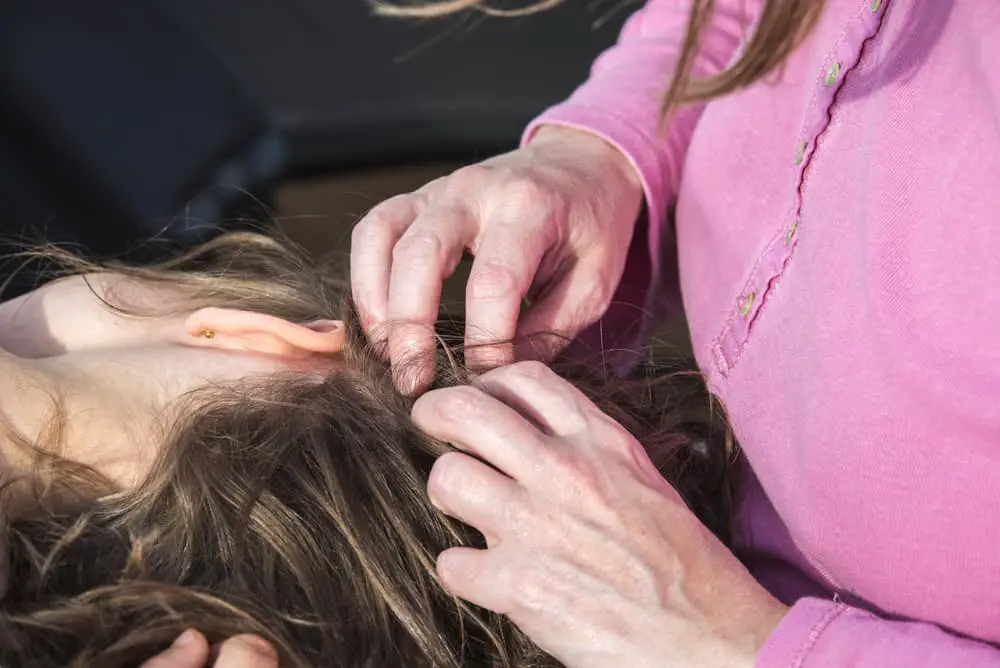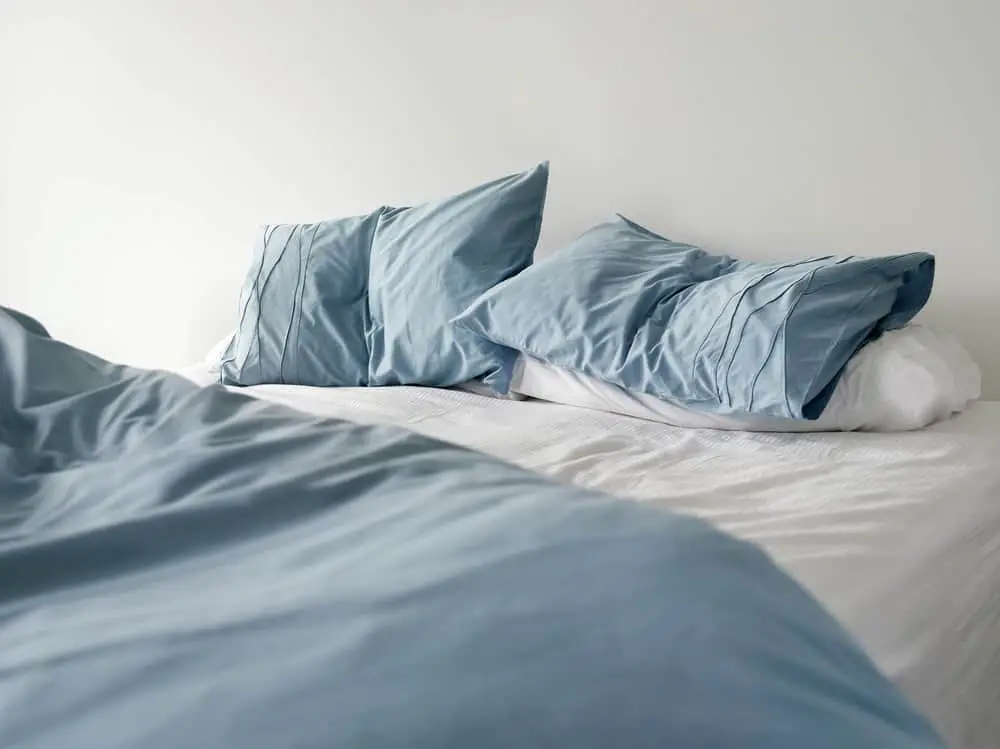Lice infestations are a common concern, especially in households with children.
It’s important to understand not only how to treat the infestation but also the lifespan of these pesky parasites to ensure a thorough eradication.
Lice are tiny insects that typically feed on human scalps, but they can also be found on other body hair. It is a widespread misconception that lice can live for extended periods away from a host, as they require blood meals to survive.
We’ll explore the life cycle of lice, focusing specifically on their ability to live on bedding without a human host and how it affects the steps you need to take to rid your home of these pests.
Lice Lifespan Without a Host
Lice are small, wingless, blood-sucking insects that can infest the human scalp, body, and pubic area. Understanding their lifespan without a host is important for effective treatment and prevention of infestations. In this section, we will discuss the lifespan of adult lice and nits when they are away from their human host.
Adult Lice
Adult lice are the most mobile and active stage of the louse life cycle. When they are on a human host, they can live for around 30 days. However, once they are removed from their host, their lifespan is significantly reduced. Lice rely heavily on the warmth and humidity provided by the human scalp to survive.
Without a host, adult lice can only live for 24 to 48 hours. This short lifespan means that they are unable to establish new infestations on bedding as they need time to lay their eggs.
Nits
Nits, also known as lice eggs, are much more resilient than adult lice. These tiny, oval-shaped eggs are laid by adult females and are firmly attached to the hair shaft close to the scalp. Off the host, nits can survive for a longer period of time, usually between 4 to 10 days. After this time, if they have not hatched, they lose their viability and cannot develop into mature lice.
It is essential to wash or vacuum any bedding, clothing, or personal items that may have come in contact with lice to prevent the spread of infestations.
Although adult lice cannot survive for long periods without a host, treating and cleaning personal items can help ensure that any remaining nits are removed and do not have the chance to hatch and cause further infestations.
Factors Affecting Lice Survival on Bedding
One of the primary concerns for anyone dealing with a lice infestation is the possibility of these parasites surviving on their bedding without a host. Several factors can impact the survivability of lice on bedding, including temperature and humidity, as well as the type of bedding material used.
Temperature and Humidity
Lice thrive in warm and humid environments. They prefer temperatures around 75°F (24°C) and high humidity levels. When exposed to colder temperatures or lower humidity levels, lice may struggle to survive. For example, when lice are exposed to temperatures below 39°F (4°C) for an extended period, their survival rate decreases significantly.
- High heat: Washing and drying bed linens in high heat can help kill both lice and their eggs. Ideally, the water temperature should be at least 130°F (54°C) when washing; for drying, use the highest heat setting on the dryer.
- Warmth: Regularly changing and washing bedding can help prevent lice from settling into the warm, cozy environment that they favor.
Type of Bedding Material
The type of bedding material used can also impact how long lice can survive without a host. Certain materials may be more hospitable for lice than others:
- Sheets, pillows, and bed linens: Lice may crawl off a host and onto bedding, hiding in areas such as mattress seams or pillowcases. Though lice cannot survive long away from a host, they may still be able to cling to fabric fibers. Regularly washing and drying bedding on high heat can effectively sanitize these items.
- Water-resistant materials: If your bedding has water-resistant properties, lice may find it more difficult to survive on the surface since they prefer damper environments.
Preventing and Treating Lice on Bedding

Washing and Drying Bedding
To effectively treat lice on bedding, the first step is to wash all the linens in hot water. This includes sheets, pillowcases, blankets, and any other fabric items that may have come in contact with the infested individual. Washing in hot water helps to kill the lice and their eggs.
After washing, dry the linens on a high heat drying cycle. This additional exposure to high temperatures further ensures the elimination of any remaining lice.
Vacuuming and Cleaning
In addition to washing and drying the affected bedding, it’s also important to vacuum the mattress, carpets, and any upholstered furniture. Vacuuming removes potential lice or their eggs from these surfaces, preventing a new outbreak.
Keep in mind that vacuuming doesn’t guarantee complete eradication of lice, but it is a vital part of the overall treatment process.
Be thorough with your cleaning routine for the bedroom and other affected areas as well. Wipe down hard surfaces like nightstands, headboards, and any non-upholstered items using a cleaning solution or disinfectant spray.
This step might not directly address lice on bedding but contributes to creating a clean and hygienic environment needed to deter future infestations.
Risk of Lice Transmission Through Bedding
Contagiousness and Close Contact
Lice are small, wingless insects that infest the human scalp and body. They can be classified into three types: head lice, body lice, and pubic lice. The transmission of lice from one person to another occurs mainly through close contact. Lice cannot fly or jump, but they can crawl quickly from hair to hair.
The risk of lice transmission through bedding is relatively low, as lice need a human host to survive. Head lice and pubic lice need to feed on human blood every few hours, and they start to weaken within 24 to 48 hours away from a human host.
However, body lice can survive for up to a week without human contact, increasing the risk of transmission through bedding.
To minimize the risk of lice transmission:
- Wash and dry bedding on high heat after an infestation
- Avoid sharing personal items like combs, brushes, and hats
- Regularly clean toys, furniture, and other items in contact with hair
Signs and Symptoms
Lice infestations cause similar symptoms regardless of the type:
- Itching: A primary symptom of lice infestation is an itchy scalp, body, or genital region. Itching is caused by an allergic reaction to lice bites.
- Rash: Small red bumps or a rash might appear on the skin due to scratching and irritation from lice bites.
- Sores: In some cases, continuous scratching can lead to open sores, which can become infected if not treated.
If you suspect a lice infestation, check for lice and their eggs (nits) on the scalp, hair, and around the ears and neck. Try to spot live lice or their eggs, which are tiny and oval in shape, attached to hair shafts near the scalp. Early detection and treatment can prevent further transmission and reduce the risk of complications.
Additional Lice Control Measures

Personal Items and Clothing Care
To control lice infestation, it’s crucial to provide proper care for personal items and clothes. Hair accessories, such as brushes, combs, hats, and scarves, must be thoroughly cleaned in hot water (at least 130°F or 54°C) for 5-10 minutes to eradicate any lingering lice or nits.
When it comes to clothing, launder all items worn by the infected person in hot water and dry them at high heat for at least 40 minutes.
Treatment Options for Infected Individuals
For infected individuals, there are several treatment options available to eliminate lice. Two primary types of treatments are used: oil and comb treatments and medicated treatments.
The oil and comb treatment involves applying oil to the hair and then using a special nit comb to remove the lice and nits. This method should be done repeatedly, as it’s most effective when done consistently over time, especially in children.
In case of severe infestations, medicated treatments can be prescribed by a healthcare professional. Some common medications include malathion, benzyl alcohol, and spinosad. These treatments should be used according to the directions for best results. Remember to regularly check for lice and nits, and if needed, repeat the treatment as directed.


